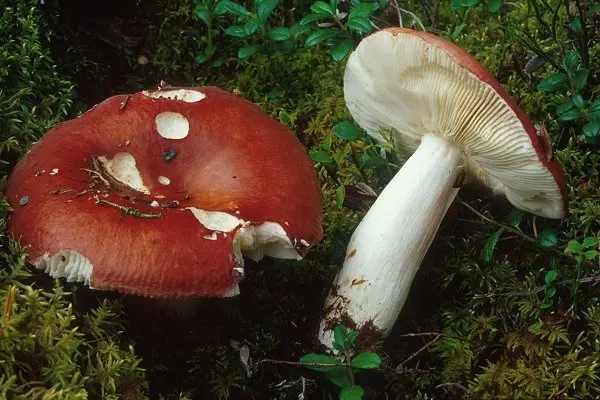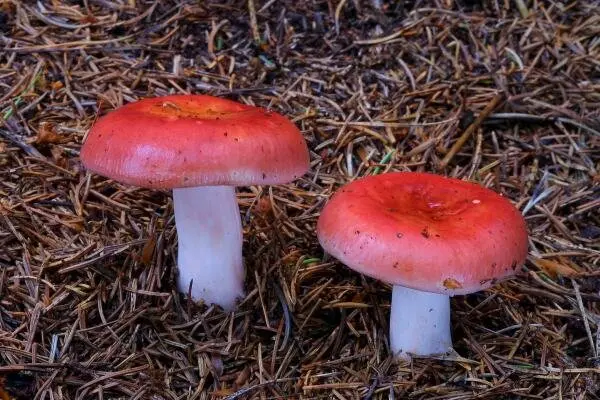Swamp Russula (Russula paludosa)
- Division: Basidiomycota (Basidiomycetes)
- Subdivision: Agaricomycotina (Agaricomycetes)
- Class: Agaricomycetes (Agaricomycetes)
- Subclass: Incertae sedis (of uncertain position)
- Order: Russulales (Russulovye)
- Family: Russulaceae (Russula)
- Genus: Russula (Russula)
- Type: Russula paludosa (Russula marsh)
Synonym:

Hat: 5-10 (15) cm in diameter, at first hemispherical, bell-shaped, then prostrate, depressed, with a lowered ribbed edge, sticky, shiny, bright red, orange-red, with a darker red-brown middle, sometimes fading light ocher spots. The peel is well removed to the very center of the cap.
Leg: long, 5-8 cm and 1-3 cm in diameter, cylindrical, sometimes swollen, dense, hollow or made, white with a pink tint.
The flesh is white, sweetish, only young plates are sometimes a little pungent. The stem is white, sometimes with a pinkish tinge, slightly shiny.
Laminae: frequent, broad, adherent, often forked, sometimes with jagged margin, white, then yellowish, sometimes with pinkish outer ends.
The spore powder is pale yellowish.

Habitat: Swamp russula is most often found in coniferous forests. The season of its active growth is the summer and autumn months.
The mushroom is found in damp pine forests, along the edge of swamps, on wet peaty-sandy soils from June to September. Forms mycorrhiza with pine.
Swamp russula is a good and tasty edible mushroom. It is used for pickling and salting, but can also be consumed fried.









